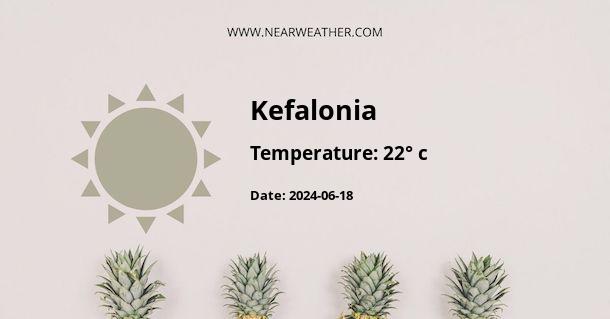Kefalonia, Greece: A Comprehensive Guide to its Climate and Weather Year-Round
When it comes to planning a trip to Kefalonia, Greece, understanding the climate and weather throughout the year is essential. Kefalonia is known for its stunning landscapes, crystal-clear waters, and vibrant culture. Whether you are a beach enthusiast, a nature lover, or a history buff, Kefalonia has something to offer year-round. Let's delve into the details of Kefalonia's climate and weather patterns to help you plan your visit accordingly.
Seasonal Overview
Kefalonia experiences a Mediterranean climate, characterized by hot, dry summers and mild, wet winters. The island enjoys an average of 300 days of sunshine per year, making it an attractive destination for travelers seeking warm weather and outdoor activities.
Here is a seasonal breakdown of the climate and weather in Kefalonia:
| Season | Average Temperature | Precipitation |
|---|---|---|
| Spring (March-May) | 15°C - 23°C (59°F - 73°F) | Low to Moderate Rainfall |
| Summer (June-August) | 25°C - 32°C (77°F - 90°F) | Very Low Rainfall |
| Fall (September-November) | 18°C - 26°C (64°F - 79°F) | Low Rainfall |
| Winter (December-February) | 10°C - 15°C (50°F - 59°F) | Moderate to High Rainfall |
Summer Weather
Summer is the peak tourist season in Kefalonia, thanks to its long, sunny days and warm temperatures. The island experiences minimal rainfall during this time, making it ideal for beach activities, boat trips, and outdoor exploration. The sea temperature also reaches its peak, inviting visitors to indulge in swimming, snorkeling, and other water-based activities.
With an average of 13 hours of sunshine per day, summer in Kefalonia offers ample opportunities to soak up the Mediterranean sun and enjoy the island's natural beauty to the fullest.
Winter Weather
While winter in Kefalonia brings cooler temperatures and increased rainfall, the island's landscape transforms into a lush, green paradise. The off-peak season allows visitors to experience a quieter side of Kefalonia, with opportunities for hiking, exploring historical sites, and enjoying traditional Greek cuisine in cozy tavernas.
Although the winter months see more rain, Kefalonia still experiences milder weather compared to many other European destinations, making it an appealing option for travelers seeking a winter escape without extreme cold.
Extreme Weather Events
Kefalonia, like many Mediterranean destinations, is susceptible to occasional extreme weather events such as thunderstorms and strong winds. These events are more likely during the transition months of spring and fall. While such occurrences are infrequent, it's advisable to stay informed about local weather forecasts and heed any relevant travel advisories.
Best Time to Visit
Based on the climate and weather patterns, the best time to visit Kefalonia largely depends on your travel preferences. For those seeking beach days and basking in the sun, the summer months provide the ideal conditions. On the other hand, nature enthusiasts and culture aficionados may find the spring and fall months more appealing, offering pleasant temperatures for outdoor activities without the peak tourist crowds.
Conclusion
Kefalonia, Greece, stands out as a year-round destination with its varied climate and weather patterns, offering something unique to every type of traveler. Whether you prefer the bustling energy of summer or the tranquil ambiance of winter, Kefalonia's charm extends across all seasons, promising unforgettable experiences amid its stunning natural landscapes and warm Mediterranean climate.
A - Kefalonia's Latitude is 38.122269 & Longitude is 20.502460.
A - Weather in Kefalonia is 11° today.
A - Climate Conditions in Kefalonia shows broken clouds today.
A - Humidity in Kefalonia is 62% today.
A - Wind speed in Kefalonia is 8.71 km/h, flowing at 17° wind direction. today.
